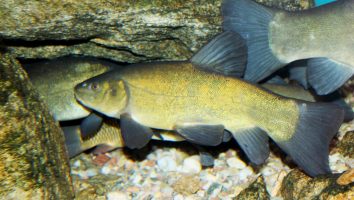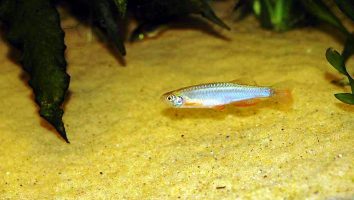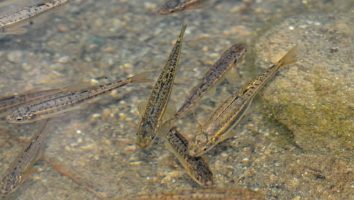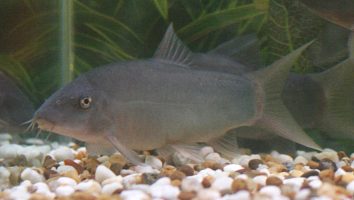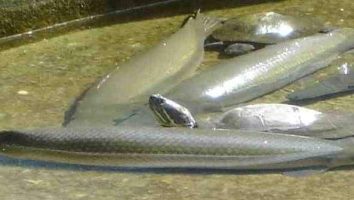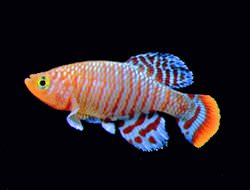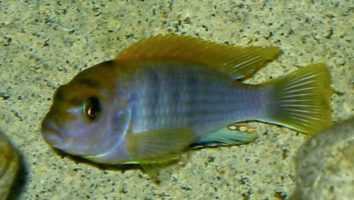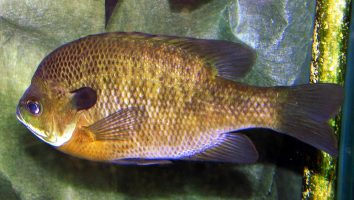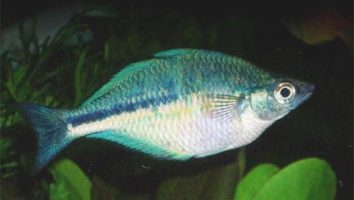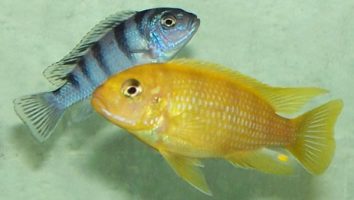The twig catfish is a peaceful and elegant freshwater fish that is perfect for the community aquarium.
This species is easy to care for and can tolerate a wide range of water conditions, making them a great choice for both beginner and experienced aquarists alike.
Despite their peaceful nature, twig catfish can be shy and reclusive, so it is important to provide them with plenty of hiding places in their tank.
In this guide, we will discuss everything you need to know about twig catfish care, including diet, tank mates, and more.
Table of contents
Species overview
Twig catfish (scientific name: Farlowella acus) are a popular freshwater aquarium fish that are native to South America. They are found in a variety of habitats throughout this region, including slow-moving rivers, creeks, and streams.
As their name suggests, twig catfish are known for their long, slender bodies which resemble sticks or twigs. This helps them blend in with their natural environment and makes them less likely to be eaten by predators.
These fish are very peaceful and can be kept with a wide variety of tank mates. They are also very easy to care for, which makes them a great choice for beginner aquarium enthusiasts.
Appearance

The first thing you’ll notice about this species is their unique coloration. The base color of the fish is brown, black, or some dark shade in between.
This color is broken up by stripes that run vertically down the body. These stripes are usually a light brown, tan, or beige color.
The coloration of these fish can be quite striking and really stand out in a dark aquarium.
Twig catfish have a very long and thin body. This gives them a snake-like appearance that can be a bit off-putting to some aquarists.
Their fins are all very thin and sleek. The dorsal fin is located about two-thirds of the way back on the body and is tall and pointy.
The anal fin is located just behind the dorsal fin and is slightly shorter. These fish have a forked caudal fin that is taller than it is wide.
Both the dorsal and caudal fins have a spine at the front that can be quite sharp. The pectoral fins are located just behind the head and are thin and long.
Lifespan
Most twig catfish species have a lifespan of 5 to 10 years. This can vary depending on the specific species and the environment they’re kept in.
In the wild, these fish usually don’t live very long. This is due to predation, parasites, and other factors. In captivity, however, they can thrive if given the proper care.
Size
Most twig catfish only grow to be about 4 inches in length.
Tank
Tank Size
The recommended minimum tank size for twig catfish is 30 gallons. If you’re looking for a smaller catfish that can do well in a smaller tank, this is not the fish for you.
While twig catfish are not known to be fin nippers, they can be a little territorial with their own kind. If you want to keep more than one fish in the same tank, we recommend adding at least another 30 gallons for each fish.
Water Parameters
The twig catfish is a freshwater aquarium fish that is native to the Amazon River Basin. As such, they prefer warm water with a moderate current.
They are a peaceful community fish that does well with other fish of a similar size. They are not known to be fin nippers but may nibble on slow-moving fish.
The twig catfish is a nocturnal fish that prefers to hide during the day. Provide them with plenty of hiding places in the form of caves, driftwood, and plants.
- Water temperature: 70 to 80 degrees Fahrenheit
- pH levels: 6.0 to 7.5
- Water hardness: 2 to 12 dGH
- Alkalinity Levels: 4-8 dKH
What To Put In Their Tank
As with most aquarium fish, the inside of the tank is just as important as the outside.
The first thing you need to do is pick a substrate. These fish like to spend a lot of time on the bottom of the tank, so you want something that’s going to be comfortable for them.
We recommend a smooth gravel or sand. These substrates are gentle on their bellies and won’t damage their delicate barbells.
The next thing you need to consider is hiding places. Twig catfish are nocturnal creatures that like to spend their days hiding from the light.
You can provide them with plenty of places to hide by adding things like driftwood, rocks, and caves. Be sure to give them plenty of options so they can choose the spot that suits them best.
Last but not least, you need to consider the plants in their tank. These fish are known to nibble on vegetation, so you’ll want to pick something that can handle a little abuse.
Hornwort, water wisteria, and Java moss are all great choices.
Common Diseases
There are a few diseases that you should be aware of if you own a twig catfish. These fish are actually quite hardy, but they can still fall ill if the water quality in their tank is not up to par.
One of the most common diseases that these fish experience is ich. This is a parasitic infection that will present itself as white spots on the body, fish, and gills of your fish.
If you notice this, it’s important to take action immediately and begin treatment. If you don’t, the ich will likely spread to the rest of the fish in your tank and could potentially kill them all.
Another disease to look out for is hole-in-the-head disease. This is a rather gruesome looking illness that stems from poor water quality and the presence of activated carbon in your tank.
This will present itself as one or two pits/holes in the skin of your twig catfish’s head. While it’s almost always curable (fixing your water quality and removing activated carbon is usually all you need to do), it will usually leave some scarring on your poor fish!
The best way to prevent these diseases is to simply keep the water in your tank clean and of high quality. Regular water changes and using a good filter will go a long way in keeping your fish healthy and disease-free.
Behavior & Temperament
The twig catfish is a peaceful and mellow fish that spends most of its time at the bottom of the tank. It’s a nocturnal fish, so you’ll see it the most when the lights are off and it’s looking for food.
This fish is a scavenger, so it will eat just about anything it can find. This includes algae, dead fish, and even live plants. If you have live plants in your tank, you may want to keep an eye on them to make sure the twig catfish doesn’t eat them all!
The twig catfish is a social creature that does best in groups. In the wild, these fish live in large groups of up to 100 individuals. So, if you’re keeping them in captivity, you should try to keep at least 6-8 fish together.
These fish are relatively calm and peaceful. They’re not aggressive and usually get along well with other tank mates. The only time you might see aggression is if two fish are fighting over the same piece of food.
Tank Mates
The Twig Catfish is a peaceful and gentle creature that can get along with most other fish in the aquarium. They are shy by nature and prefer to stay hidden among the plants and décor in the tank.
Because of their timid nature, it’s best to choose tank mates that are not too aggressive or boisterous. peaceful fish that occupy different parts of the tank are ideal.
Some good tank mates for Twig Catfish include:
- Dwarf Gouramis
- Neon Tetras
- Ghost Shrimp
- Guppies
- Corydoras Catfish
- Otocinclus Catfish
- Khuli Loaches
- Rummy Nose Tetras
Breeding
Breeding twig catfish is a bit more difficult than some of the other species on this list. First and foremost, you need to identify the males and females.
Males are typically smaller with more slender bodies. They also have slightly longer fins. Females, on the other hand, are larger with rounder abdomens.
The best way to trigger breeding is by slowly raising the water temperature. You want to get it up to about 82 degrees Fahrenheit.
Once the temperature has been raised, you should start to see the males preparing spawning sites. These sites are usually under rocks or in caves.
Once the sites are ready, the males will start to court the females. If everything goes according to plan, the females will lay their eggs in the spawning site.
The male will then fertilize them and start to guard the eggs.
Eggs usually hatch within two weeks. When they do, you can start to feed the fry live foods like brine shrimp or daphnia.
Conclusion
The Twig Catfish is an excellent addition to any freshwater tank. They’re peaceful, relatively low-maintenance, and will help keep your tank clean.
They’re also interesting to watch, as they’re constantly scavenging for food.
If you’re looking for a hardy, low-maintenance fish, the Twig Catfish is a great option.

